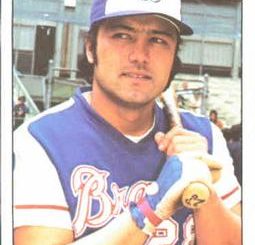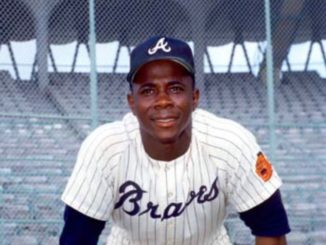
The best Brave to wear #29 should be rather obvious – it’s Hall of Famer John Smoltz, for whom the #29 jersey is retired.
The only member of every division champion in the 14-season streak, Smoltz won 210 games in Atlanta. An 8-time All-Star, he was good before the team was, posting a 2.94 ERA in over 200 innings in 1989. In the worst-to-first 1991 season, Smoltz was a major strength down the stretch. On August 1, Smoltz was 6-12 with a 5.47 ERA. Over his final 13 starts, he went 8-1 with a 1.49 ERA and 4 complete games. Smoltz had always run hot and cold, but after that mid 1991 turnaround, which famously came with some help from a sports psychologist, he pretty much just ran hot for a very long time.
In 1992, he allowed a 2.85 ERA, led the NL in strikeouts (215), and would win the NLCS MVP award. In 1993, he again struck out over 200 batters in what was his 3rd All-Star season. 1994 was a stutter for Smoltz, and the strike came at an oddly fortunate time, allowing him to put a bad season behind him. 1995 saw him return to form, posting his best season yet (12-7, 3.18, 9.0 K/9).
1996 would be the most memorable season of Smoltz’s career. He set career highs in pretty much everything, going 24-8, 2.94, with 276 K’s in 253.2 innings. Smoltz won the NL CYA, and he even maintained his dominance throughout the postseason: in 5 postseason starts, he threw 38 innings, allowing just a 0.95 ERA in October. He was better in the World Series than his 1-1 record suggested. The loss was a 1-0 loss to Andy Pettitte.
Smoltz was excellent again in 1997 (15-12, 3.02, 241 K’s in a league-leading 256 innings), 1998 (17-3, 2.90, 173 K’s), and 1999 (11-8, 3.19, 156 K’s). Through all of these seasons, elbow pain plagued him, and it finally reached a breaking point in spring training in 2000. Smoltz heard the dreaded pop, and TJ surgery sidelined him for the entire 2000 season.
When Smoltz returned, midway through 2001, he struggled through 5 starts – 25 innings, a 5.76 ERA, and a .320 batting average allowed. After a return to the DL, Smoltz and the team agreed a bullpen schedule might be more conducive to his return to health, and Smoltz moved to the ‘pen in late July. Over the course of the season, Smoltz allowed just a 1.59 ERA, a .495 OPS, and picked up 10 saves. He was a revelation. With his contract up, Atlanta asked Smoltz to return as full-time closer. After flirting with the Yankees in free agency, Smoltz re-signed with the Braves.
The closer gig couldn’t have gotten off to a shakier start. In his second game of 2002, he allowed 8 runs in 2/3 of an inning. After that game, he pitched 78.2 innings of 2.40 baseball, striking out 81 and picking up 55 saves to lead the NL. Smoltz finished 3rd in the ’02 CYA vote and 8th in the MVP race.
2003 was arguably better – allowing a 1.12 ERA on his way to 45 saves. In 2004, he saved 44 with a 2.76 ERA. After pitching 5 innings in 2 appearances in the 2004 NLDS, Smoltz decided to move back to the rotation, and the team was convinced they needed him to.
It was a stunningly easy transition for a pitcher in his late thirties. Over the next three years, Smoltz went 44-24 with a 3.22 ERA. In ’06 he led the league with 16 wins and finished 7th in the CYA vote. The following year he finished 6th (and won his 200th game). Shoulder problems plagued him through 2008, and in 2009, after Atlanta correctly asserted that he was done as a productive pitcher, he joined the Red Sox. Upon realizing Atlanta was correct, Boston released him. Smoltz signed with St. Louis, where he finished his career.
For a similar recap of his career, check out his SABR bio.
One of the most popular posts in the history of this site was focused on Smoltz, and I’ll happily link it here:
Also, these:
Who Was the Best Ever to Wear #29?
Rod Carew was awfully good, and Adrian Beltre is probably closest to making this a discussion, but I’ll stick with the man who has more postseason steals (3) than Carew and Beltre combined (2), Mr. Smoltz.




Leave a Reply